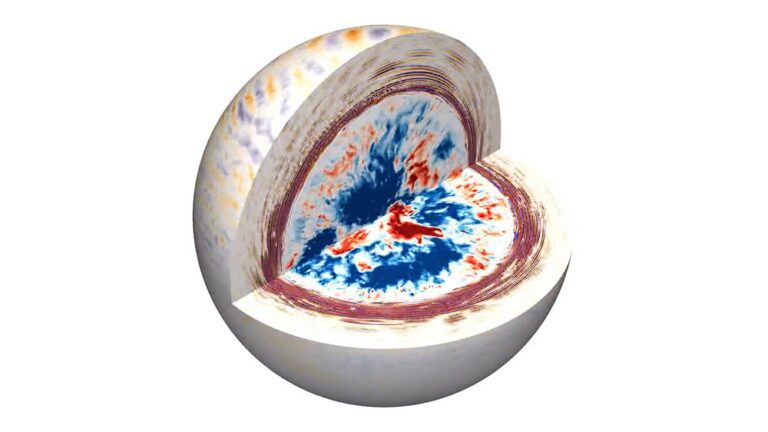
[ad_1]

Deep inside stars, fusion reactions combine hydrogen atoms to form helium and release a burst of energy. That energy produces heat, and the heat rises toward the outside of the star, triggering waves along the way that can roll for hundreds of thousands of years.
Scientists have blamed these waves for an odd flickering seen in the light of very massive, very hot stars. They have good reason: By compressing or decompressing plasma on the surface of the star, these convection waves should briefly interfere with how the star appears. But a new study concludes that the twinkling would be too minor to account for the pulsing “red noise.”
The effect is even too minor to detect using currently available telescopes, including the James Webb Space Telescope. (Star flickering visible with the naked eye is caused by interference from Earth’s atmosphere.) There may still be special cases, however, where the flickering would be bright enough to observe, such as fast-spinning stars.
“It’s an interesting question we’re hoping to get an answer to,” said Matteo Cantiello, a research scientist at the Flatiron Institute’s Center for Computational Astrophysics, in a statement.
Twinkle, Twinkle
Why care about the twinkling of a distant star, anyway?
As part of the study, the team from the Flatiron Institute and Northwestern University built a first-of-its-kind computer model (video) that determines a star’s twinkling based on the waves roiling inside it – and the system works in reverse. With an observed pattern of twinkling, the researchers can reverse engineer the star and learn about what’s happening in its core.
Much of the universe depends, in some way, on the inner workings of stars, which influence the formation of galaxies and produce the oxygen that we breathe.
Music in Space
Simulating stellar cores proved to be a daunting task given that heating events last for a few weeks, while the resulting waves can endure for hundreds of thousands of years.
To start, the researchers compared the waves to the sound oscillations produced by a musician standing in a music hall.
The team first simulated bouncing music around a star – “Twinkle, Twinkle Little Star” and the Jupiter movement from Gustav Holst’s orchestral suite “The Planets.” Depending on the size of the star, the music sounded either ethereal or dreamy and submerged.
When the researchers adapted the model to handle convection waves, they found that the twinkling produced was too faint to account for the red noise. But that’s not the end of the story.
“This work allows future space telescopes to probe the central regions where stars forge the elements we depend upon to live and breathe,” said Evan Anders, a postdoctoral researcher at Northwestern University.
Read More: Stars Invisible to the Eye Could Host Watery Exoplanets
[ad_2]